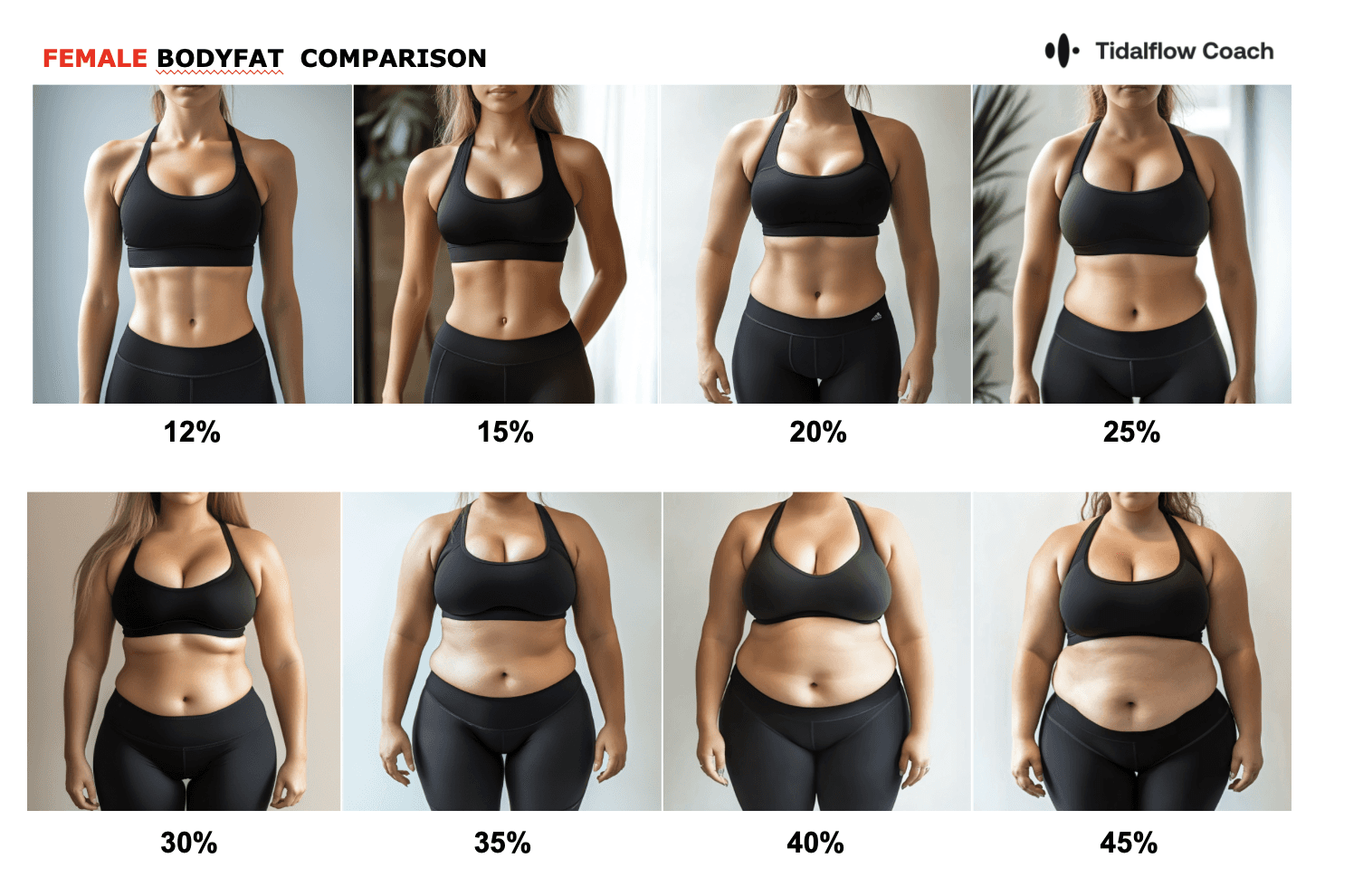Why Stretching Causes Dizziness: Prevention & Concerns
Sep 16, 2024
Have you ever stood up after a deep stretch, only to feel the room spinning around you? You're not alone. Many people experience dizziness or lightheadedness during or after stretching, especially when it involves the neck or changes in body position. At Tidalflow, we believe in making fitness safe and accessible for everyone, so let's dive into why this happens and how you can prevent it.
The Science Behind Stretching-Induced Dizziness
Dizziness during stretching isn't just in your head - there are several physiological reasons why this can occur. Understanding these reasons can help you take steps to prevent dizziness and enjoy your stretching routine without discomfort.
1. Blood Pressure Changes
When you stretch, especially in positions where your head is below your heart (like in forward bends or downward dog), your blood pressure can change rapidly. This is due to the effects of gravity on your circulatory system.
In an upright position, your heart works against gravity to pump blood to your brain. When you invert your body, blood flows more easily to your head, potentially increasing blood pressure in your upper body. As you return to an upright position, it takes a moment for your body to adjust and redistribute blood flow. This can lead to a temporary drop in blood pressure, resulting in feelings of dizziness or lightheadedness.
This phenomenon, known as orthostatic hypotension, is particularly common in people with naturally low blood pressure or those taking certain medications. It's also more likely to occur if you've been in a stretched position for an extended period.
2. Inner Ear Disturbances
Your inner ear plays a crucial role in maintaining balance. The vestibular system, located in the inner ear, contains fluid-filled canals that help your brain determine your body's position in space. Certain stretches, particularly those involving the neck, can affect the fluid in your inner ear, disrupting your sense of balance and causing dizziness.
For example, neck rotations or stretches that involve tilting your head can momentarily confuse your vestibular system. This can lead to a sensation of dizziness or vertigo, which usually passes quickly once you return to a neutral position.
3. Dehydration
If you're not properly hydrated, stretching can exacerbate feelings of lightheadedness. Dehydration can lead to a drop in blood volume, making it harder for your body to maintain stable blood pressure during position changes.
When you're dehydrated, your blood becomes more concentrated, and your blood volume decreases. This makes it more challenging for your circulatory system to adjust to changes in position, increasing the likelihood of dizziness when stretching.
Proper hydration is crucial not just for preventing dizziness, but for overall health and fitness performance. It's especially important if you're engaging in more intense forms of exercise like HIIT workouts alongside your stretching routine.
4. Breathing Techniques
Improper breathing during stretching can also contribute to dizziness. Holding your breath or breathing too shallowly can reduce oxygen flow to your brain, leading to lightheadedness.
Many people unconsciously hold their breath when stretching, especially during challenging poses or deep stretches. This can cause a temporary decrease in oxygen supply to the brain, resulting in dizziness.
On the other hand, hyperventilating or breathing too quickly can also cause dizziness by altering the balance of oxygen and carbon dioxide in your bloodstream. This is why controlled, steady breathing is so important during stretching and other forms of exercise.
5. Underlying Medical Conditions
In some cases, dizziness during stretching might be a sign of an underlying medical condition. These could include:
Vertigo: A condition that causes a false sensation of spinning or movement.
Low blood pressure: Can make you more susceptible to dizziness when changing positions.
Inner ear problems: Such as benign paroxysmal positional vertigo (BPPV).
Cardiovascular issues: Including heart arrhythmias or circulation problems.
Neurological conditions: Such as migraines or multiple sclerosis.
If you experience frequent or severe dizziness during stretching, it's important to consult with a healthcare professional to rule out any underlying conditions.

How to Prevent Dizziness While Stretching
Now that we understand why stretching can sometimes make you dizzy, let's explore some strategies to prevent this uncomfortable sensation:
1. Move Slowly and Mindfully
Avoid rapid changes in position, especially when moving from a position where your head is below your heart. Rise slowly and give your body time to adjust. This allows your circulatory system to adapt gradually to the change in position, reducing the likelihood of a sudden drop in blood pressure.
Practice mindfulness during your stretching routine. Pay attention to how your body feels and be aware of any sensations of lightheadedness or dizziness as they begin to develop. This awareness can help you adjust your position or take a break before the dizziness becomes more severe.
2. Focus on Your Breathing
Practice deep, steady breathing throughout your stretching routine. This helps maintain a steady oxygen supply to your brain and can prevent lightheadedness.
Try to breathe deeply into your diaphragm, rather than taking shallow chest breaths. Inhale slowly through your nose, allowing your belly to expand, and exhale slowly through your mouth. This type of breathing can help regulate your blood pressure and keep you feeling stable during your stretches.
3. Stay Hydrated
Drink plenty of water before, during, and after your workout. Proper hydration helps maintain blood volume and pressure, reducing the risk of dizziness.
A good rule of thumb is to drink about 8 ounces of water 30 minutes before your stretching session, and continue to sip water throughout your routine if it's lengthy or particularly intense. After stretching, replenish any fluids lost through sweating.
4. Warm Up Gradually
Start with gentle movements to get your blood flowing before moving into deeper stretches. This can help prevent sudden blood pressure changes.
A good warm-up might include light cardio like marching in place or gentle jogging, followed by some dynamic stretches. This prepares your body for more intense stretching and reduces the risk of dizziness and injury.
5. Be Mindful of Neck Stretches
When stretching your neck, move slowly and avoid extreme positions. If you're prone to dizziness, you might want to avoid neck rotations altogether.
Instead of full rotations, try gentle tilts from side to side or forward and back. Always move within a comfortable range of motion and avoid forcing your neck into positions that feel strained or uncomfortable.
6. Listen to Your Body
If you start to feel dizzy, stop the stretch immediately and sit or lie down until the feeling passes. Don't push through discomfort.
Remember, stretching should feel good. While some mild discomfort is normal when stretching tight muscles, you should never experience pain or severe dizziness. If you do, it's a sign that you need to adjust your technique or consult with a fitness professional or healthcare provider.

Safe Stretching Techniques
Incorporating safe stretching techniques into your fitness routine can help prevent dizziness and improve your overall flexibility. Here are some stretches that are less likely to cause dizziness:
Standing Quad Stretch: This stretch targets your quadriceps without requiring any bending or inversion.
Seated Hamstring Stretch: Performing this stretch while seated reduces the risk of blood pressure changes.
Shoulder Rolls: This gentle stretch can help relieve upper body tension without risking dizziness.
Gentle Torso Twists: Performed slowly and with control, this stretch can improve spinal mobility.
Chest Opener Stretch: This stretch can be done standing or seated, making it less likely to cause dizziness.
Remember, it's important to perform these stretches gently and never force your body into positions that cause pain or severe discomfort. Start with a shorter hold time and gradually increase as your flexibility improves.
When to Seek Medical Advice
While occasional, mild dizziness during stretching isn't usually a cause for concern, there are times when you should consult a healthcare professional:
If dizziness is severe or persistent
If you experience other symptoms like nausea, hearing changes, or vision problems
If dizziness occurs even when you're not stretching or exercising
If you have a history of heart problems or low blood pressure
It's always better to err on the side of caution when it comes to your health. A healthcare provider can help determine if your dizziness is related to your stretching technique or if it's a sign of an underlying condition that needs treatment.
The Tidalflow Approach to Safe Stretching
At Tidalflow, we understand that everyone's body is different, and what works for one person might not work for another. That's why our AI-powered personal trainer creates customized stretching routines tailored to your specific needs and sensitivities.
Our app takes into account factors like:
Your fitness level
Any health conditions or injuries
Your flexibility goals
Your history of dizziness or other exercise-related discomfort
Based on this information, we create a personalized stretching routine that helps you improve flexibility while minimizing the risk of dizziness or other adverse effects.
How Tidalflow's AI Adapts Your Stretching Routine
Our AI doesn't just provide a one-size-fits-all stretching plan. It continuously learns from your feedback and progress to adjust your routine. For example:
If you report feeling dizzy after certain stretches, the AI will suggest alternatives or modify the technique to reduce the risk of dizziness.
As your flexibility improves, the AI will gradually increase the intensity and duration of your stretches to ensure you continue making progress.
If you have specific areas of tightness or discomfort, the AI will focus more attention on these areas while maintaining a balanced overall routine.
The AI can integrate your stretching routine with your other workouts, ensuring you're properly warmed up and cooled down for each session.
By using AI to personalize your stretching routine, we can help you achieve your flexibility goals safely and effectively, without the worry of dizziness or discomfort.
FAQs About Stretching and Dizziness
Can stretching too much cause permanent dizziness?
No, stretching itself doesn't cause permanent dizziness. However, if you experience persistent dizziness, it's important to consult a healthcare professional as it could be a sign of an underlying condition.
Stretching, when done properly, is a safe and beneficial activity. If you're experiencing ongoing dizziness, it's more likely due to an underlying issue rather than the stretching itself. This could be related to inner ear problems, blood pressure issues, or other medical conditions that need to be addressed.
Is it normal to feel lightheaded after yoga?
Mild lightheadedness can occur after yoga, especially in classes that involve a lot of inversions or position changes. However, severe or persistent dizziness is not normal and should be addressed.
If you regularly feel lightheaded after yoga, try these tips:
Stay hydrated before, during, and after class.
Move slowly when transitioning between poses, especially when moving from inverted positions.
Focus on steady, controlled breathing throughout your practice.
If a pose makes you feel dizzy, come out of it slowly and rest in child's pose or savasana until the feeling passes.
How can I improve my balance to reduce dizziness during stretching?
Regular balance exercises can help improve your overall stability and potentially reduce instances of dizziness. Tidalflow's AI trainer can incorporate balance training into your personalized workout plan.
Some effective balance exercises include:
Single-leg stands
Heel-to-toe walks
Yoga poses like tree pose or warrior III
Using a balance board or BOSU ball
Incorporating these exercises into your routine can improve your proprioception (your body's sense of its position in space) and overall stability, which may help reduce dizziness during stretching.
Should I eat before stretching to prevent dizziness?
Having a light snack before exercising can help maintain blood sugar levels and potentially reduce dizziness. However, avoid heavy meals right before stretching or working out.
A small, easily digestible snack about 30 minutes before your stretching session can help stabilize your blood sugar and provide energy. Good options include:
A piece of fruit
A small handful of nuts
A yogurt
A slice of whole-grain toast with peanut butter
Remember to pair your snack with plenty of water to ensure you're well-hydrated before you start stretching.
Embrace Safe and Effective Stretching with Tidalflow
Understanding why stretching sometimes makes you dizzy is the first step towards a safer, more effective flexibility routine. By implementing the tips we've discussed and listening to your body, you can enjoy the many benefits of stretching without the discomfort of dizziness.
Stretching offers numerous benefits beyond just increasing flexibility. Regular stretching can:
Improve your range of motion
Enhance your athletic performance
Reduce the risk of injuries
Improve posture and balance
Reduce muscle tension and stress
Increase blood flow to your muscles
By incorporating safe stretching techniques into your routine, you can reap these benefits while minimizing the risk of dizziness or discomfort.
Ready to take your stretching routine to the next level? Try Tidalflow free for 7 days and experience the power of AI-guided, personalized fitness. Our app adapts to your needs, helping you achieve your flexibility goals safely and effectively.
With Tidalflow, you'll have access to:
Customized stretching routines tailored to your fitness level and goals
Real-time form corrections to ensure you're stretching safely
Progress tracking to keep you motivated
Integration with your overall fitness plan for a holistic approach to health and wellness
Remember, a good stretch should feel good, not disorienting. With Tidalflow's guidance, you can develop a stretching routine that enhances your flexibility, supports your overall fitness, and keeps you feeling balanced and strong. Don't let the fear of dizziness hold you back from improving your flexibility.
Start your journey with Tidalflow today and discover how enjoyable and beneficial a proper stretching routine can be. Whether you're a fitness novice or a seasoned athlete, our AI-powered personal trainer can help you stretch safely, effectively, and comfortably. Say goodbye to dizziness and hello to a more flexible, balanced you!
You should not have to do it all on your own













